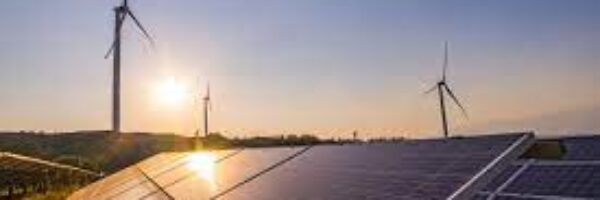
Hydrogen has a critical role to play in the transition to a low-carbon economy, especially when it comes to areas of economy for which electricity generated through renewable sources isn’t a way forward, such as long-haul transport. While the hydrogen sector is still in its infancy, local projects are starting to get off the ground to build capacity.
The inert gas has long been used in the ammonia trade, which consumes around 180 million tonnes of the commodity annually. But now, hydrogen is being positioned as an important part of our future clean energy mix. Forward-thinking businesses are putting in place the technology and infrastructure to distribute it.
Leaders in this space have an eye not only to supply the Australian market with hydrogen, but also to export the gas to regions where clean energy sources are not in abundance, such as parts of Europe and Asia. It’s an immense opportunity, with the Department of Industry, Science, Energy and Resources (DISER) estimating there’s a $130 billion to $185 billion project pipeline required to build the foundations of the Australian hydrogen industry.
“We need to bring the entire economy along in this transition to low carbon energy, including hard-to-abate industries. Areas such as shipping, steel and heavy haulage are areas that need an alternative and hydrogen can provide that,” says Alaster Long, head of future fuels, corporate and institutional, National Australia Bank.
Australia, with its abundance of sunshine and wind, is well-positioned to be a force in the globally renewable energy market, including for hydrogen. Right now, NAB is supporting its clients through the decarbonisation process as the hydrogen sector matures and projects gain magnitude. The bank is also contributing to the industry through industry bodies, such as the Australian Hydrogen Council.
“It’s still early days for the hydrogen industry, with most projects still at pilot stage. Scaling up will require significant project and corporate finance. There is a huge need for investors, banks, governments, insurance companies and others to allocate significant capital to the sector,” says Long.
Over time, it’s expected the hydrogen industry will grow to a size comparable to today’s LNG market, with projects of an equivalent size. “So, while different technologies are involved with hydrogen and it’s a different commodity to LNG, the process banks go through to fund projects in both sectors is similar,” he adds. The existing LNG export market is likely to act as a facilitator for hydrogen exports, with today’s overseas LNG customers expected to be the hydrogen customers of tomorrow.
Given the massive size of the hydrogen opportunity, governments play an important role helping the fledgling sector become viable. “State and federal governments are starting to lay down the regulatory and policy response to help to facilitate the industry. We will work with governments to build the industry,” says Long.
The Australian Gas Infrastructure Group knows all about the importance of government support. It worked with the South Australian government to develop one of the first and most significant hydrogen projects in the country.
AGIG owns gas infrastructure, including gas pipelines, gas distribution and gas storage across all mainland Australian states except the ACT. The business is focused on decarbonising the gas it supplies to homes and businesses and it is starting to deliver renewable hydrogen projects to achieve just that.
“Our board has set a very clear, low-carbon strategy for our business so that by 2030 at least 10 per cent of the gas in our supply systems will be renewable gas, in the form of bio gas and hydrogen. We want 100 per cent renewable gas through our supply system by 2050 and that’s driving the business,” says AGIG CEO Craig de Laine.
AGIG’s first hydrogen project, launched in May 2021 in partnership with the South Australian government, is the state’s 1.25 megawatt Hydrogen Park. It’s Australia’s largest renewable hydrogen production facility to date, and will assist AGIG to meet its ambition of supplying totally clean, green energy to the nation.
“This project, which distributes a 5 per cent hydrogen blend, demonstrates we can safely and reliably deliver renewable hydrogen to homes and businesses in South Australia. We’ve recently announced we’re going to expand the project from 700 to 4,000 customers,” says de Laine.
A blended energy source adds hydrogen into existing natural gas pipelines to create better environmental outcomes.
AGIG’s next project is Gladstone’s Hydrogen Park in Queensland, which is still in development phase. The coastal city is already a major LNG export hub and this project aims to distribute a 10 per cent hydrogen blend to about 1,000 homes and businesses.
“But the big project we’re working on is Hydrogen Park, Murray Valley, a 10-megawatt hydrogen production facility, which is eight times the size of Hydrogen Park South Australia. It’s going to provide a 10 per cent renewable hydrogen blend to 40,000 customers in Albury Wodonga. That’s an incredibly exciting project because it allows us to step up in scale and customer numbers and helps us work towards our targets,” he adds.
NAB is a financial partner to AGIG, providing funding for the $9 billion-plus it has already invested in gas infrastructure. Says de Laine: “We need supportive partners to help us through this transition, including customers, governments and the banks.”
As for the future, a multitude of different stakeholders, including banks, governments, energy businesses and infrastructure providers are working at pace right now to build a hydrogen industry that once up and running, will play an important role in the international renewable energy mix. It’s an exciting time for the sector and it will be fascinating to watch Australia become a leader in this new, renewable energy industry.
https://www.afr.com/companies/financial-services/australia-set-to-lead-global-hydrogen-industry-20220611-p5at07
